Automating Your Webinars The Engaging And Delightful Way written by John Jantsch read more at Duct Tape Marketing
Marketing Podcast with Melissa Kwan
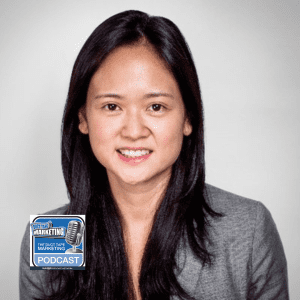 In this episode of the Duct Tape Marketing Podcast, I interview Melissa Kwan. Melissa is the CEO and Co-founder of Webinar. She has spent twelve years in startups and built three successful companies without venture capital backing. Her previous startup, a real estate tech company, was acquired in 2019. As a revenue-driven founder specializing in sales and business development, Melissa has learned how to build companies with very few resources — by automating what she could, outsourcing wherever possible, and inspiring talented people to join her team with shared focus and enthusiasm.
In this episode of the Duct Tape Marketing Podcast, I interview Melissa Kwan. Melissa is the CEO and Co-founder of Webinar. She has spent twelve years in startups and built three successful companies without venture capital backing. Her previous startup, a real estate tech company, was acquired in 2019. As a revenue-driven founder specializing in sales and business development, Melissa has learned how to build companies with very few resources — by automating what she could, outsourcing wherever possible, and inspiring talented people to join her team with shared focus and enthusiasm.
![]()
![]()
Key Takeaway:
Webinars in the various formats they exist in have been around for years. The rise of the on-demand webinar has happened over the last ten years. Many of the webinar platforms aren’t created with the customer in mind first. Melissa Kwan set out to solve a problem in the market she was facing herself. eWebinar was created to deliver a professional, authentic experience that helps engage and delight viewers. In this episode, I talk with Melissa about her entrepreneurial journey and the problems that eWebinar set out to solve.
Questions I ask Melissa Kwan:
- [1:38] How has your entrepreneurial journey led you here?
- [2:32] What is Webinar?
- [3:35] How is this platform different from the other options out there?
- [6:11] Did you make a decision in the very beginning that you wanted to steer clear of being scammy?
- [16:42] Are you an engineer or programmer yourself?
- [17:06] What’s been the hardest part from a tech perspective?
- [18:37] What’s your most requested new feature?
- [19:47] What’s the vision for the company three years from now?
- [22:06] Where can more people learn about eWebinar and connect with you?
More About Melissa Kwan:
- Connect with Melissa on LinkedIn
- eWebinar.com
Take The Marketing Assessment:
- Marketingassessment.co
Like this show? Click on over and give us a review on iTunes, please!
John Jantsch (00:00): This episode of the duct tape marketing podcast is brought to you by business made simple hosted by Donald Miller and brought to you by the HubSpot podcast network business made simple, takes the mystery out of growing your business. A long time, listeners will know that Donald Miller’s been on this show at least a couple times. There’s a recent episode. I wanna point out how to make money with your current products, man, such an important lesson about leveraging what you’ve already done to get more from it. Listen to business made simple wherever you get your podcasts.
John Jantsch (00:45): Hello and welcome to another episode of the duct tape marketing podcast. This is John Jantsch. My guest today is Melissa Kwan. She is the co-founder and CEO of E webinar. She’s also spent 12 years in startups and built three successful companies without venture capital backing her previous startup a real estate tech company was acquired in 2019 as a revenue driven founder, specializing in sales and business development. She has learned how to build companies with very few resources, something a lot of folks listening can appreciate by automating what she could outsourcing whenever possible and inspiring talented people to join her team with shared focus and enthusiasm. So Melissa, welcome to the show.
Melissa Kwan (01:29): Thanks John, for having me.
John Jantsch (01:31): So I feel like I gave a little taste of it there, but I feel like we should just have you kind of say here’s been my entrepreneur journey. We’re gonna talk about your most current undertaking, but where have you been to get you to here?
Melissa Kwan (01:45):
John Jantsch (02:32): So, so let’s, I guess let’s ask the, you know, what is E webinar? Just give us the like really quick, you know, view of that so we can kind of break it down then a little from there.
Melissa Kwan (02:41): Yeah. So E webinar, the concept is simple. We save people from doing repetitive, boring webinars over and over again. So you can imagine sales, demos, pitches, onboarding, training, product updates, customer interviews, you know, things like that. Right? So you might be running them on zoom right now, or you might not be doing them because you don’t have a person to run them. We turn any video into an interactive webinar that you could set on a recurring schedule or join on demand. So people can consume that content whenever they want.
John Jantsch (03:09): Yeah. So webinars have certainly been around for, you know, ages, internet ages, I guess, you know, 15, 20 years peop marketers have been using them, certainly live, but recently eight, 10 years ago, it seems like this platform of going and signing up and sort of watching a live
Melissa Kwan (03:40): Yeah. I mean, so first of all, we don’t do any live webinars. Yeah. Right. We don’t, there is no live audio. There’s no live video. Like enough people are solving this. Yeah. Like down to like Facebook live Instagram live, like everyone in the world is trying to solve this and it really solving it and doing a great job. So what we wanted to solve was the next phase of that. How do you scale a live webinar or a presentation that, you know, works for you? Yeah. Like if you’re doing, you know, a lead gen kinda customer interview type webinar, once a quarter, how, what kind of impact would that have on your business if you made that available every single day. So that’s really, that’s the space that we’re focusing on. And if you, if anyone that’s listening to this right now thinks to themselves, Hey, I’ve seen those before.
Melissa Kwan (04:25): Right. But it’s a little bit scammy. You’re right. And that’s why we exist. I was also in my previous life looking for something that would do this particular thing and everything I found was almost like designed to deceive consumers, to trick them into buying something or create false scarcity, which isn’t what sales and marketing is about. It’s not what branding is about. Right? It’s about delivering a beautiful professional, authentic experience that reflects your brand, but also an experience that allows your customer, your prospect, your attendee, to connect with you. It’s not a video on YouTube. A webinar is where you can go and engage and ask questions and get a response back. So what E webinar does differently is we made the investment to build an asynchronous chat system. Just like your Intercom, your Zend desk, any chat bubble that pops up on a website. When people ask you questions through chat, you can, if you’re there hop into respond live, but if you’re not there, it’s totally fine. Cuz when you respond later, they still get your response on email. And I would say no other automated webinar company had actually made that investment to build up that system.
John Jantsch (05:33): Yeah. I mean, there, there’s certainly a place for on demand because you know, you and I are talking it’s 10 o’clock at night for you when you’re talking. It’s uh, dunno what time it is here. Two o’clock for me. I mean, so the, there is a, you know, there is a need in the customer journey to allow people to get the information they want when they want it. So I think the case for having those makes a lot of sense, but the point that you also made is that so many of ’em are trying to fake their live and that there’s pre-canned chat and it says there’s 27 people on right now.
Melissa Kwan (06:22): The thing is John, like the last thing I would want is to build a business that facilitates a behavior. Yeah. That’s the bottom line. Yeah. So very early on, we looked at all these players and we thought, okay, like there’s a reason why they have that because people ask for it, the customers ask for it. Yeah. But what I care about and what gives my business longevity is if your customer likes you,
Melissa Kwan (07:09): Because the market’s big enough. Yeah. So we wanted to deliver a product with integrity first, which means we had to constantly not put in features and not build features that create that kind of fake scarcity. Right. So we have no simulated chat, no fake sales notifications, no fake counter. Everything is real. You can put in sales notification, but it’s based on your conversion pixel, there is a counter, but you could choose live or accumulative, but it’s real. Like everything’s real. And our chat is one on one between the attendee and the moderator, like none of that fake stuff. Right. So we just made a decision early on to say like, this is just not a business that like, we wanna track those kind of people. And we said like, we came to terms with the fact that it would take us longer to get off the ground. Cause we couldn’t, we wouldn’t be able to win people that already on the other platforms, but that’s okay. Yeah.
John Jantsch (07:59): Well I, let me push back there a little bit because I was on the other platform and I saw this as a, uh, you know, I was on those platforms because I wanted on demand and I just put up with the other stuff. Right? Yeah. But what I want to have with my customers is a long term relationship. Not a short time, I sold you something, uh, relationship. And I think that’s maybe why people put up with those is because they do work in a certain way, but not for the long term. And I think that what you’ve built is for somebody, in my opinion, is for somebody who views their relationship with their customers as a long term relationship, as opposed to I sold you something.
Melissa Kwan (08:38): Well, I would say because we delivered the product in this way. Yeah. Like it is, we mimicked our branding and how we want people to feel to MailChimp. Yeah. Yeah. Right. We wanna be fun. We wanna be a startup, but we wanna be established. Yeah. Right. We want to feel like this is a company they can trust. And that goes down to, you know, the product and integrity. Right. And the features that you have. So I would say like before this year, maybe last year, cuz we, the product’s been line for two years, you would not see companies like Zillow on automated webinars yeah. Or fresh works or catalyst. Right. Like none of those like real established companies would be on there. The people that have been leveraging, those are like a lot of solo entrepreneurs, a of coaches, a lot of like internet cash marketers, but like real companies have never automated what their webinars for this reason. Like they might have a gated landing page or they might have a video with CR YouTube, but that’s not a webinar experience.
John Jantsch (09:36): Yeah. And now let’s hear from a sponsor, you know, everybody’s online today, but here’s the question. Are they finding your website? You can grab the online spotlight and your customer’s attention with some rush from content and SEO to ads and social media SEMrush is your one stop shop for online marketing build, manage and measure campaigns across all channels faster and easier. Are you ready to take your business to the next level, to get seen, get SEMrush, visit SEMrush.com that’s SEM rush.com/go. And you could try it for seven days for free.
John Jantsch (10:17): I, I tell you that one of the features that, that I really love is because one of the things we really want is somebody not just sitting there mindlessly watching, or maybe like having your webinar in a different, you know, different screen while they’re working. And they’re just listening to it is the amount of engagement.
John Jantsch (10:32): One of the things that’s very built in is you have a lot of built in features and templates for getting people engaged, for finding out who they are for creating, you know, a reason for them to say more about the who they are and what they want and what they’re trying to accomplish. And I think that maybe some of the other platforms have that, but I think you’ve really cracked that part. And to me, not only getting rid of the stuff we’ve been calling kind of scammy, I think that to me is probably your best feature.
Melissa Kwan (11:00): Yeah. So we call them interactions, right? Yeah. Um, and I was, when I was coming out with this product, I was also thinking like, okay, let’s face it. Webinars are boring. Yeah. Right. It depends on like how fun it is and how engaging it is. A lot of times if depends on the speaker. Sure. And let’s face it like topic obviously. Yeah. And not, everyone’s a great speaker. And then during live webinar, there’s lots of interruptions. People ask questions, there’s housekeeping. Maybe your connection is bad. Like none of that happens on an automated webinar cause it’s based on a video. But I was thinking like, what is it that you could deliver then put out there that can get your, a attendee to stay till the end so they can take that action. Yeah. If they don’t stay till the end, even if you deliver your CTA, they’re never gonna see it.
Melissa Kwan (11:42): So we, we have these thing called interactions, which are like programmable polls, questions, resources, sales, alerts, you know, things that allow the, a attendee to participate right. In the experience with you. So it’s not like I come in and you’re talking at me for 45 minutes and I’m playing on my phone and you’re losing me to Instagram. Like when you ask me a question, something pops up and I’m actually able to engage with it. Maybe I can see the results and things like that. But on the host side, we actually gather all that data and we deliver it to you in a beautiful, actionable and understandable report. So you can actually see like where are people hitting a thumbs up? Because within any webinar you can hit a thumbs up. It’s more of a consumer experience. Where are people dropping off? Are they answering this question?
Melissa Kwan (12:26): So you can imagine in the past six months I’ve ran my demo. I don’t do live demos. It’s all in new webinar. Of course. All right. I ran it 1500 times. And my first question is, how did you hear about us? Yeah. And about 60 PE like 60% of people will answer that question. So from a marketing perspective, that is such valuable information. Yeah. And the more I run it, the better data I’m getting to, whether it’s helping my business or helping me make a better presentation. Next time, all of that is, is very useful.
John Jantsch (12:55): And I can say, this is not exactly scientific, but we have run this same webinar for many years. And you know, we’re always tweaking a little bit. I will say that our completion rate has significantly increased since moving to ewe R now I will give one caveat because of all the interaction we’ve actually changed how we’re presenting this information BA you know, because we’re, we feel like we have all these engagement tools now.
Melissa Kwan (13:35): I mean, we have a customer that took the exact same video. Yeah. And put it into E webinar and their engagement and completion rate went up by 50%. Like they did nothing at all. So that’s why, like, we, we encourage people to just give it a try. I think that one of the biggest pushback we have is like, well, if it’s a video, then why don’t I just use YouTube? Yeah. Yeah. And it’s just the mindset of it, isn’t it? Yeah. Like, yeah, you get a registration page, you choose it time. There’s reminders, there’s follow ups. And then it starts at a certain time. Or you can watch it on demand. Like, I, I know earlier you said like there’s a place for, on demand for webinars particularly, but like, it’s so interesting how in our everyday lives, like as consumers we expect on demand video content.
Melissa Kwan (14:18): Yeah. Like when was the last time you didn’t watch something on apple TV or Netflix or Amazon, like I expect to go there and press play and watch it at my own time. However, for some reason, for B2B content, you have to come to my show right next Tuesday at 11, my time zone. So there’s a bit of a disconnect, right. So I think it’s not only like there’s a place for on demand and B2B content. I think it’s already here. And the people that understand that will be able to use that as a differentiator in their business.
John Jantsch (14:50): Yeah. That’s such a great point. I think again, it’s one of those things where we just get used to it. It’s like, well, that’s the way we get to, you know, consume this content. But a lot of behaviors, especially buying behaviors and things really do get influenced by the way that we behave every day in life. And just your example of the streaming, you know, programming, I mean like TV guide, what’s that right?
Melissa Kwan (15:28): I mean, another great example is like texting, like who calls now? Like maybe your family member, you’re like, Hey, I’m outside or I’m downstairs. Or, you know, if you’re in your car, like maybe you’ll call on a headphone. And we have some people that are looking at E webinar. Maybe they’re moving from zoom, cuz they’re like just absolutely exhausted from running these live webinars and they just have to scale. But one of the questions they have for us is, well, if you don’t, if I can’t answer people right away or using my voice, are they gonna be mad at me? Like, does that mean worse? Does that mean worse customer service? Because I’m used to doing this live thing and I’m used to making people feel, feel special by calling out their name or answering the question. But my response is always just give it a try because I think your customers, like you’d be surprised at how your customers would prefer tech space and how much more manageable all that Q and a is. If it is text space
John Jantsch (16:28): To, to totally agree. And just going back to E webinar, another thing that I think people will enjoy, you talked about trying to make it fun. I think the interface itself is actually, um, easier to set up and easier to, to operate, uh, and get a webinar going than a lot of the other platforms as well. So you’ve think you’ve conquered a number of the things that competitors aren’t doing. I do wanna talk a little bit about just the business of building this as well. You know, from a text import first, I should have asked you in the beginning, are you an engineer or programmer yourself or
Melissa Kwan (16:57): No, I wish I, I wish, yeah. I wish I was an engineer cuz otherwise it would be feature complete by now.
John Jantsch (17:06): So, so what’s been the hardest part from a tech sample.
Melissa Kwan (17:10): Oh my gosh. Like I, it is a constant battle every day, but what is the hardest? I would say the one thing, I mean, of course the first thing is just scaling. Cuz as you build a business as like, you know, people start having a thousand people in a webinar. Yeah, yeah. Or you have two of those and now there’s 2000 people and everyone’s sending a chat. Right. And then, but you can’t test for that scenario until you get there.
Melissa Kwan (18:04): Like all the chat and all the interactivity, like we’ve worked that kind of stuff out. But right now, give, give you an example. People are asking for the ability to pause. So say I’m running a workshop. I wanna say, okay, I’m gonna let you pause for five minutes. You can finish this worksheet and then you can press play or it’s gonna start on its own. I still don’t understand this, but apparently it messes with the timeline of the video and then it messes with all the analytics. Yeah.
John Jantsch (18:36): So, so I was gonna ask you what your most requested feature is. New feature is, and that maybe you just revealed it.
Melissa Kwan (18:44): We have an ongoing wishlist of features, but definitely what you’re gonna see next is a full facelift of our attendee experience. So what we have right now is I think it’s two, three times better than what’s out there. But what you’re about to see is something that will be 10 times, 20 times better than what’s out there because we wanna really deliver an experience that’s less businessy, like less zoom and way more consumers. So what we’re taking inspiration from is not the webinar solutions that are out there. Yeah, yeah, yeah. We’re taking inspiration from like Twitch or gaming companies or you know, apple TV, like those kind of things and see like how people actually wanna consume interactive video because this is what it is, right. Call it in a webinar automation software, but it is interactive video. So how do people wanna engage and consume that content and feel like, you know, they learn something and that and feel delighted. Right. I think delighted is the word.
John Jantsch (19:47): So are you one of those people that I could say, you know, what’s the vision for this company three years from now? Or are you really still trying to, you know, wrestle with the momentum of the moment?
Melissa Kwan (19:58): The only thing I care about right now is getting to profitability.
John Jantsch (21:00): Well, and I think I love about it and I think people need to, you know, customer journey, we can design the most perfect customer journey. People are gonna go through ’em the way that they’re gonna go through them. And I think that’s what, you know, a lot of times, if they can go through three or four stages of the customer journey one night, because that’s what they were really
Melissa Kwan (21:24): Um, yeah. I mean, I’ll leave you with one stat that I love from trust radius. 87% of buyers prefer to do their own research sure. Through their buying journey. Yeah. And 57% already make a purchase without talking to a salesperson. Yeah. Yeah. So you can actually make transparency and access to content your differentiator. If your competitor is gating everything, making people book a call, not making their webinars on demand and making it just difficult for people to get the information they need to make a decision, then they’re gonna go somewhere else.
John Jantsch (22:02): Absolutely. Melissa advi tell us where people can find out more about the product and connect with you.
Melissa Kwan (22:11): Yeah. If you wanna connect with me, LinkedIn is best. So my name is Melissa K w a N. And check out E webinar. If you’re curious how it works, there is, uh, an on-demand demo of course, delivered through E webinar in a very meta way. And it’s exactly as it sounds, ewe.com.
John Jantsch (22:25): Awesome. Well, Melissa, it was great. You know, I’m a fan. I, you know, love the product itself and answered something we were looking for. So we were happy to find it. And hopefully we’ll appreciate you stopping by the, take some time on the duct tape marketing podcast. And hopefully we’ll run into you out there on the road one of these days.
Melissa Kwan (22:42): Thanks so much, John.
John Jantsch (22:43): Hey, and one final thing before you go, you know how I talk about marketing strategy strategy before tactics? Well, sometimes it can be hard to understand where you stand in that what needs to be done with regard to creating a marketing strategy. So we created a free tool for you. It’s called the marketing strategy assessment. You can find it @ marketingassessmentdotco.co check out our free marketing assessment and learn where you are with your strategy today. That’s just marketing assessment.co I’d love to chat with you about the results that you get.
Sign up to receive email updates
Enter your name and email address below and I’ll send you periodic updates about the podcast.
This Duct Tape Marketing Podcast episode is brought to you by the HubSpot Podcast Network and SEMRush.
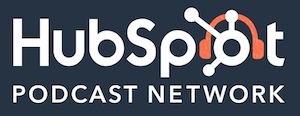
HubSpot Podcast Network is the audio destination for business professionals seeking the best education and inspiration to grow a business.
![]() Everybody’s online, but are they finding your website? Grab the online spotlight and your customers’ attention with Semrush. From Content and SEO to ads and social media, Semrush is your one-stop shop for online marketing. Build, manage, and measure campaigns —across all channels — faster and easier. Are you ready to take your business to the next level? Get seen. Get Semrush. Visit semrush.com/go to try it free for 7 days.
Everybody’s online, but are they finding your website? Grab the online spotlight and your customers’ attention with Semrush. From Content and SEO to ads and social media, Semrush is your one-stop shop for online marketing. Build, manage, and measure campaigns —across all channels — faster and easier. Are you ready to take your business to the next level? Get seen. Get Semrush. Visit semrush.com/go to try it free for 7 days.
Did you miss our previous article…
https://www.sydneysocialmediaservices.com/?p=1414

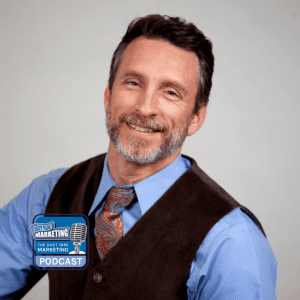 In this episode of the Duct Tape Marketing Podcast, I interview Mike Michalowicz. Mike is
In this episode of the Duct Tape Marketing Podcast, I interview Mike Michalowicz. Mike is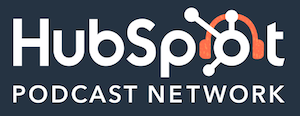


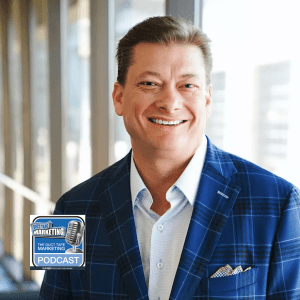 In this episode of the Duct Tape Marketing Podcast, I interview Jeb Blount. Jeb
In this episode of the Duct Tape Marketing Podcast, I interview Jeb Blount. Jeb 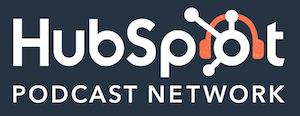
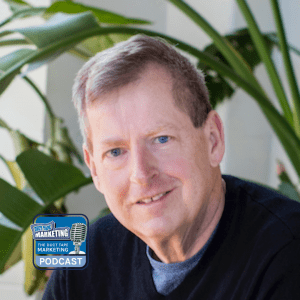 In this episode of the Duct Tape Marketing Podcast, I’m doing a solo show. I’m going to break down the 10 key areas that may be holding your business back.
In this episode of the Duct Tape Marketing Podcast, I’m doing a solo show. I’m going to break down the 10 key areas that may be holding your business back.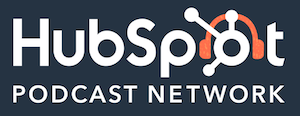
 Did you know there’s an automated marketing platform that’s 100% designed for your online business? It’s called Drip, and it’s got all the data insights, segmentation savvy, and email and SMS marketing tools you need to connect with customers on a human level, make boatloads of sales, and grow with gusto. Try Drip free for 14 days (no credit card required), and start turning emails into earnings and SMS sends into cha-chings.
Did you know there’s an automated marketing platform that’s 100% designed for your online business? It’s called Drip, and it’s got all the data insights, segmentation savvy, and email and SMS marketing tools you need to connect with customers on a human level, make boatloads of sales, and grow with gusto. Try Drip free for 14 days (no credit card required), and start turning emails into earnings and SMS sends into cha-chings.


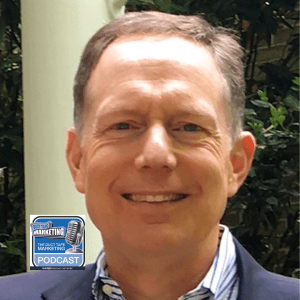 In this episode of the Duct Tape Marketing Podcast, I interview Jack McGuinness. Jack i
In this episode of the Duct Tape Marketing Podcast, I interview Jack McGuinness. Jack i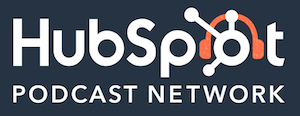
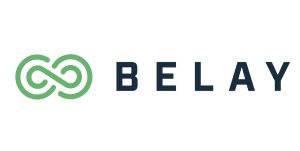 is an incredible organization revolutionizing productivity with its virtual assistants, bookkeepers, website specialists, and
is an incredible organization revolutionizing productivity with its virtual assistants, bookkeepers, website specialists, and 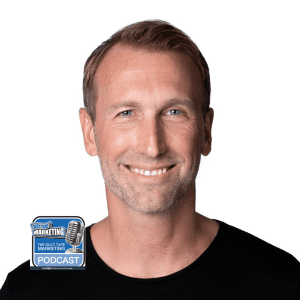 In this episode of the Duct Tape Marketing Podcast, I interview Edward Sullivan. Edward
In this episode of the Duct Tape Marketing Podcast, I interview Edward Sullivan. Edward 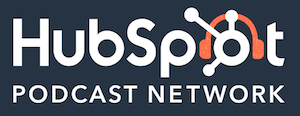
 Did you know there’s an automated marketing platform that’s 100% designed for your online business? It’s called Drip, and it’s got all the data insights, segmentation savvy, and email and SMS marketing tools you need to connect with customers on a human level, make boatloads of sales, and grow with gusto. Try Drip free for 14 days (no credit card required), and start turning emails into earnings and SMS sends into cha-chings.
Did you know there’s an automated marketing platform that’s 100% designed for your online business? It’s called Drip, and it’s got all the data insights, segmentation savvy, and email and SMS marketing tools you need to connect with customers on a human level, make boatloads of sales, and grow with gusto. Try Drip free for 14 days (no credit card required), and start turning emails into earnings and SMS sends into cha-chings.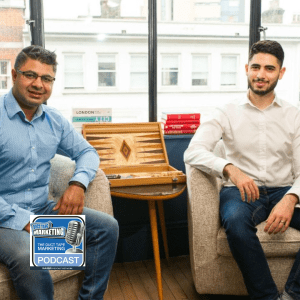 In this episode of the Duct Tape Marketing Podcast, I interview Ash Ali and Hasan Kubba. They both
In this episode of the Duct Tape Marketing Podcast, I interview Ash Ali and Hasan Kubba. They both 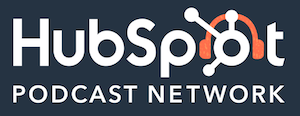
 Did you know there’s an automated marketing platform that’s 100% designed for your online business? It’s called Drip, and it’s got all the data insights, segmentation savvy, and email and SMS marketing tools you need to connect with customers on a human level, make boatloads of sales, and grow with gusto. Try Drip free for 14 days (no credit card required), and start turning emails into earnings and SMS sends into cha-chings.
Did you know there’s an automated marketing platform that’s 100% designed for your online business? It’s called Drip, and it’s got all the data insights, segmentation savvy, and email and SMS marketing tools you need to connect with customers on a human level, make boatloads of sales, and grow with gusto. Try Drip free for 14 days (no credit card required), and start turning emails into earnings and SMS sends into cha-chings.

